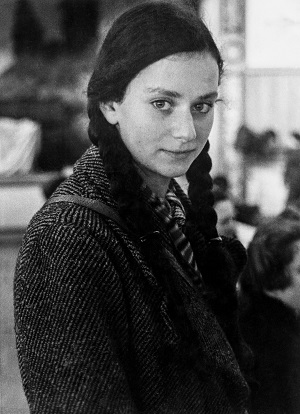
The Kindertransport
A desperate effort to save children from the Holocaust
by Alex Q. Arbuckle

Something about this unidentified girl's face – I don't know what – prompted me to single her out. [Ed.]
On the night of Nov. 9 and 10, 1938, across Germany and Austria, thousands of synagogues and Jewish businesses were burned or ransacked by Nazi stormtroopers and civilians in a pogrom known as Kristallnacht — the Night of Broken Glass. At least 91 Jews were murdered, and tens of thousands were arrested and taken to concentration camps, marking the beginning of the Holocaust.
In response, British Jews and Quakers made an emergency appeal to Prime Minister Neville Chamberlain, asking for the government to allow the admission of unaccompanied child refugees. A bill was quickly passed by the government.
Within days, the Refugee Children’s Movement and other groups sent representatives to Germany and Austria to organize the relocation of the children most at risk of persecution. The effort was informally dubbed the Kindertransport. The BBC broadcast a call for foster homes.
Three weeks after Kristallnacht, the first group of 196 children, mostly from a burned Berlin orphanage, arrived in the UK. Over the next nine months until the outbreak of war in September 1939, nearly 10,000 more would join them from Germany, Austria, Poland and Czechoslovakia.
The care and education of the kinder was paid for entirely by private individuals and organizations, and they were expected to return to their families when the crisis had passed.
Housed in foster homes, hostels and holiday camps, children between the ages of 3 and 17, most of whom would never see their parents again, adjusted to their new lives.
Among the children saved by the Kindertransport were future Nobel laureates Arno Penzias and Walter Kohn, and many others who, despite losing everything, would grow up to become prominent scientists, politicians and artists. One wrote as an adult: “I will be eternally grateful to this country (England). They were the only ones who took us in.”
See the New York Times for more photos Here.